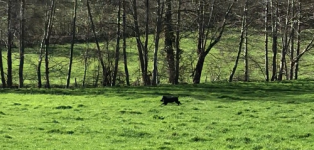BTV Digger
New member
Hi all,
Just back from overseas in south-central France on a most memorable trip. Spent 9 days there metal detecting with my close friends from Green Mountain Diggers, staying at the family private residences - a large 15th century chateau, then a medieval 12th century abbey! The finds were amazing by my standards, but most memorable were meeting the family, friends, the late night dinner parties, and oh, large amounts of great French food and wine! I also had to run away from a wild boar! The finds came mainly from the abbey and the saffron fields of yet another private villa of theirs which is being restored. That place is apparently haunted. Just crazy to sleep in after late night partying, then get up, grab a quick bite, then walk out the front door, choose a field and start detecting. Nuts. I ended up digging 12 small hammered and early milled coppers, mainly from Henry IV through Louis XIV (late 1500s through early 1700s - Tournois and Double Tournois were common), though a few of the rough smaller hammereds are likely earlier (12th to 15th century). I also dug 6 large French coppers (4 Napoleon IIIs, an early French Republic variety, and a Louis XV) from the late 1700s into the 1800s. A number of more modern French Francs were also unearthed. However, my best coin still has me amazed. It's a Marcus Aurelius Sestertius (RIC 1314 - Sear 4815) minted in 153-154 AD under Emperor Antoninus when Marcus was still his adopted son. Just a honking huge brass coin (32 mm dia., ~ 20 grams). The obverse shows Marcus, with the reverse showing the Goddess Minerva. I have the coin with me here in the states, but will be giving it back to my friend's Mom (owner of the abbey) to either keep it with the place or donate it to the local Roman museum in a nearby town. It was long felt that the abbey (built in 1148) stood on an ancient Roman fort, but was unproven. With my buddy's Roman pieces he found along with my coin this essentially proves it. Now as I'm back in the states I must endure my 14 day quarantine before returning to work. Hopefully all of you remain healthy and we all get through these trying times unscathed. God speed and happy hunting!
John
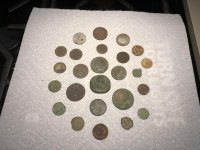
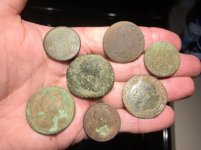
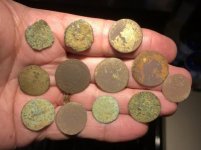
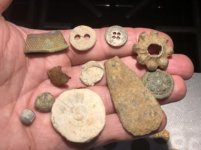
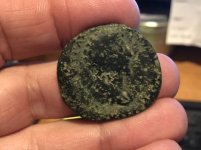
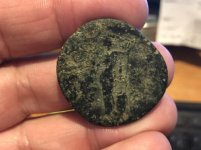
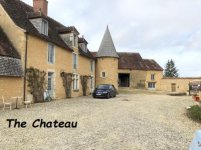
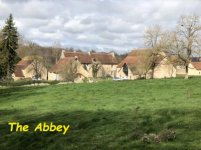
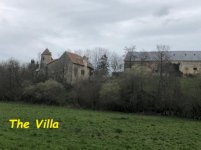
Just back from overseas in south-central France on a most memorable trip. Spent 9 days there metal detecting with my close friends from Green Mountain Diggers, staying at the family private residences - a large 15th century chateau, then a medieval 12th century abbey! The finds were amazing by my standards, but most memorable were meeting the family, friends, the late night dinner parties, and oh, large amounts of great French food and wine! I also had to run away from a wild boar! The finds came mainly from the abbey and the saffron fields of yet another private villa of theirs which is being restored. That place is apparently haunted. Just crazy to sleep in after late night partying, then get up, grab a quick bite, then walk out the front door, choose a field and start detecting. Nuts. I ended up digging 12 small hammered and early milled coppers, mainly from Henry IV through Louis XIV (late 1500s through early 1700s - Tournois and Double Tournois were common), though a few of the rough smaller hammereds are likely earlier (12th to 15th century). I also dug 6 large French coppers (4 Napoleon IIIs, an early French Republic variety, and a Louis XV) from the late 1700s into the 1800s. A number of more modern French Francs were also unearthed. However, my best coin still has me amazed. It's a Marcus Aurelius Sestertius (RIC 1314 - Sear 4815) minted in 153-154 AD under Emperor Antoninus when Marcus was still his adopted son. Just a honking huge brass coin (32 mm dia., ~ 20 grams). The obverse shows Marcus, with the reverse showing the Goddess Minerva. I have the coin with me here in the states, but will be giving it back to my friend's Mom (owner of the abbey) to either keep it with the place or donate it to the local Roman museum in a nearby town. It was long felt that the abbey (built in 1148) stood on an ancient Roman fort, but was unproven. With my buddy's Roman pieces he found along with my coin this essentially proves it. Now as I'm back in the states I must endure my 14 day quarantine before returning to work. Hopefully all of you remain healthy and we all get through these trying times unscathed. God speed and happy hunting!
John









